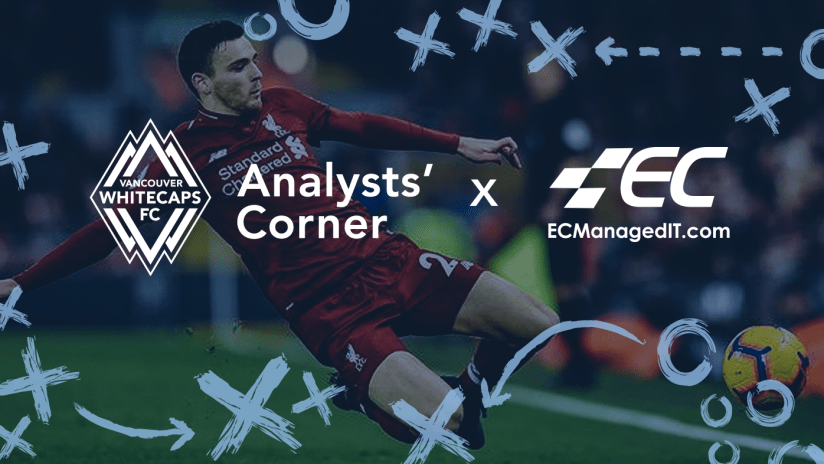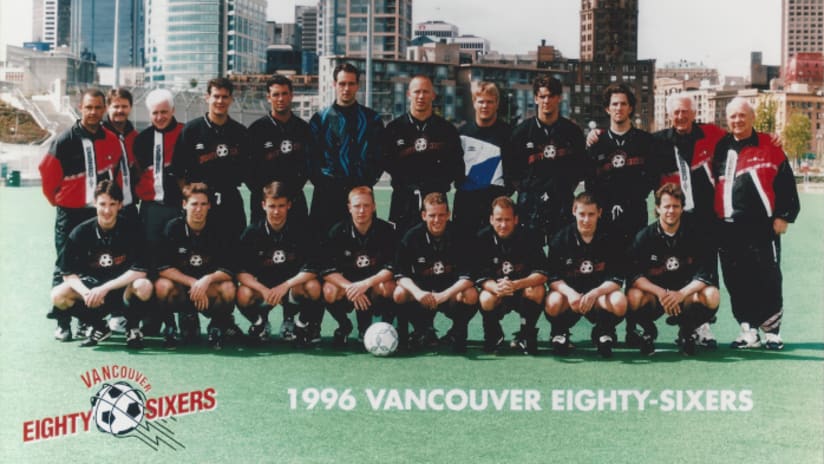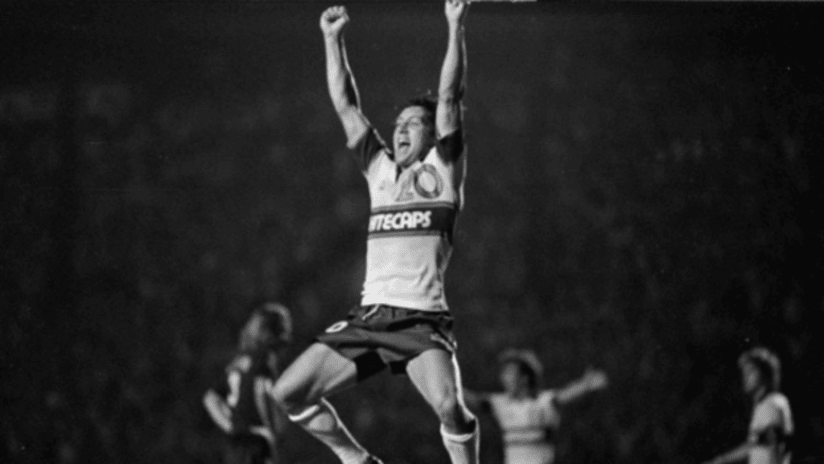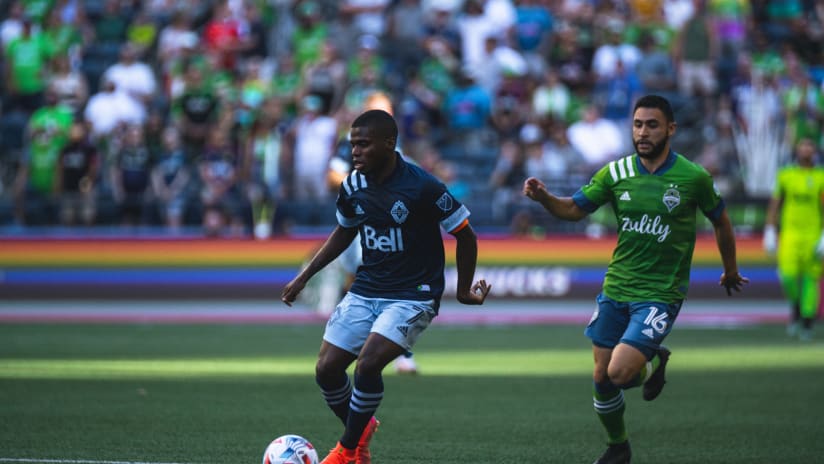Sometimes, there’s more to the beautiful game than meets the eye. Delve deeper with Analysts’ Corner, presented by EC Managed IT, a new blog featuring tactical insights from Whitecaps FC video analyst coach Andrew Peat, assistant video analyst Luke Summers, and Academy and assistant first team video analyst Andrew Foster.
This article will focus on ideas based on individual defending. This is a broad topic and relates to specific contextual scenarios in which players are to make decisions on how to defend. Individual defending is also closely linked to 1v1 defending and the skillset that the player has to execute “effective” defending.
It’s understood that “defending” is most important for the back line, but the reality is that all players must know how to defend. Whether it be a forward, midfielder, defender or goalkeeper, each player has defensive responsibilities within the tactics of the team. The collective individual defending aspects of each player adds to the sum of the team’s ability to limit chances within the game model.
What is effective individual defending?
To define what this is can change from person to person, coach to coach and player to player. It can be winning the ball, blocking a cross, clearing the ball, delaying play, winning tackles, intercepting the ball, blocking shots, goal clearances, body on the line, and so on. The most important aspect is that players and coaches have a clear understanding and expectation to allow for the players to execute in their role.
Effective individual defending is very much context-based and situational. We are going to explore several scenarios of defensive positioning, 1v1 defending in wide areas and clearing the ball from a cross around the following framework.
- Decision-making
- Defensive positioning
- Body orientation
- Visual attention
In these two examples, you see Liverpool FC left back Andy Robertson defending in wide areas. Each scenario starts with his body orientated towards the ball and his eyes focused on the ball and the player, as he is closest to the attacker.
His body weight shifts allowing him to reorientate his shape towards the ball as the play goes wide. Robertson has the decision to step in and try to win the ball or delay. Although tempted, he doesn’t commit himself, which can result in being beaten if the attacker has control of the ball. Robertson is looking for visual cues/triggers as to when to engage and commit.
In both scenarios, he maintains a distance from the attacker that limits passing options but stops him from getting beat 1v1. The first clip sees a cross come into the box that is easily cleared. This 1v1 defending has delayed the speed of play and Liverpool can win/retain/clear the ball. The cross is also from the corner with a limited angle and has a lower probability of leading to a scoring chance.
The second clip shows Robertson executing the same function but where he has to block the cross at the source. He is able to do so as a result of his defensive positioning, body orientation and decision-making when to commit to the block/tackle.
Defensive positioning and positional play shows insight into a player’s ability to read and interpret the game, as the situations continually evolve and change. As you can see in the video clips above, Giorgio Chiellini is an experienced centre back who excels on this front.
His body positioning is orientated towards the ball and he has the ability to cover space behind in the channel, drop centrally or step forward. His decisions are based on quickly interpreting the information around him, such as pressure on the ball, attacking movement, quality of the pass and defensive cover.
As he’s further away from the ball, he’s able to scan the field and take in more information which is used quickly to assist in readjustments of his defensive position relative to the other centre back and the left back. He’s able to shift his focus from the ball to potential movement of other forwards then back to the ball. His defensive positioning is always in relation to the ball, key spaces and his defenders. With this understanding, he’s able to intercept the ball and break the attack of the opposition.
This video shows FC Barcelona defending in wide areas and how cover is provided by the midfielder.
The individual defending work that is focused on is Gerard Piqué’s positioning in the box as the ball is crossed in. He and the other defender’s body is orientated towards the ball and each player makes little adjustments so they can get a line of sight to the immediate action between the fullback and the forward. Due to the positioning and ability to read the visual cues, he can challenge and defend the centre of the goal by winning the aerial dual.
Timing of when to step and attack the ball is key in his role as a centre back along with reading the trajectory of the ball. As he’s focused on the ball and his positioning, he’s able to achieve the first contact while being challenged for the ball in the air.
These video examples provide insight into some of the key elements involved in individual defending and how they are executed in competition. Developing defensive capabilities is part of a player’s journey when they first begin playing the game and a skillset required to succeed at the professional level. All players have attacking and defensive roles in their team and their ability to contribute effectively in both elements is key to the team’s overall performance.




